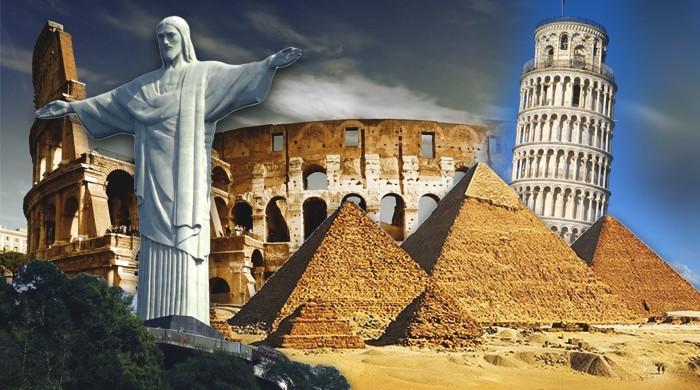How the Seven Wonders travelled from Greeks to the world as we know it
These seven miracles of the world are the most prominent vacationing spots on planet Earth, attracting hundreds of thousands of visitors every year
April 26, 2017

History offers holiness to just a single rundown of seven wonders arranged by Greek scientist Philo of Byzantium in 200 BC.
Landmarks highlighted in this antiquated listing comprised Colossus of Rhodes, Lighthouse of Alexandria, Hanging Gardens of Babylon, Temple of Artemis at Ephesus, Great Pyramid of Giza, Mausoleum at Halicarnassus, and Statue of Zeus at Olympia.
The Taj Mahal, however, does not figure in this catalogue, particularly in light of the fact that it clearly didn't exist at that time.
Later, there was a worldwide movement, started by Swiss businessman Bernard Weber, to pick seven new wonders organised through a global polling. It was open to royalty and common man alike and its rules made it compulsory that the structures be manmade and in adequate condition to be conserved.
The convention of Seven Wonders has motivated succeeding generations to assemble incalculable records since the Alexandrian time. These included Rome’s Colosseum, Catacombs of Alexandria, Great Wall of China, Stonehenge, Porcelain Tower of Nanjing, China, Leaning Tower of Pisa in Italy, and the Hagia Sophia of Constantinople.
The seven new marvels, therefore, revealed an issue with the old list. The Greeks, interestingly, were quite constrained by their boundaries and couldn't have seen what else was going on around the globe.
The new seven miracles of the world were finalised on July 7, 2007, in Lisbon, Portugal, after a tremendously advertised overall survey. The Taj Mahal, finally, was named at the top position, while the other six who managed to make it to the list were the pyramid at Chichen Itza of Mexico, the Christ the Redeemer of Brazil, the Roman Colosseum of Italy, the considerable mass of china, the Machu Picchu of Peru, and the pink remnants of Petra in Jordan.
The Taj Mahal, tremendous and selective catacomb, was commissioned in India’s Agra in 1630 AD on the request of Shah Jahan, the fifth Mughal emperor. It is considered to the best gem of Muslim workmanship in India and a globally-appreciated culmination of art.
The Pyramid at Chechen Itza, Mexico, was constructed before 800 AD. A much-acclaimed Mayan sanctuary city, the ‘wonder’ filled in as the political and financial focal point of the Mayan civilisation. The archaeological site covers around six square miles, partitioned into two sections, of which one was worked on between the tenth and thirteenth centuries AD.
Christ, the Redeemer was built in Brazil in 1931. This gigantic statue of Jesus – standing 38 metres tall on the Corcovado mountain, and overseeing Rio de Janeiro – was designed by Heitor da Silva Costa, a Brazilian architect, and brought to life by French sculptor Paul Landowski.
The Colosseum, on the other hand, was constructed sometime between 70-82 AD as an amphitheatre to mark the Roman Empire’s grandeur. Boasting four stories, the Herculean structure could accommodate more than 50,000 people. It was conceptualised in the time of Roman emperor Vespasian and completed by his child Titus.
The Machu Picchu in Peru, South America, was built by Incan emperor Pachacuti in the 15th century on top of its homonymous mountain – the Andes plateau. Myths and legends indicate the site was saved as a holy place and utilised as a galactic observatory.
Jordan’s Petra, constructed somewhere between 9 BC and 40 AD on the edge of the Arabian Desert, was the sparkling capital of the Nabataean Empire. It is known for sporting numerous beautifully-carved structures and became known to the world after Johann Ludwig Burckhardt discovered it in 1812.
These seven miracles of the world are the most prominent vacationing spots on planet Earth, attracting hundreds of thousands of visitors every year.
—Iliyan is a young, learning enthusiast and change activist. He is currently pursuing his O'Levels at The City School, Karachi.











